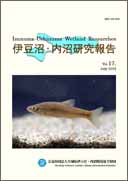Current issue
Displaying 1-12 of 12 articles from this issue
- |<
- <
- 1
- >
- >|
-
Article type: research-article
2023 Volume 17 Pages 1-15
Published: July 11, 2023
Released on J-STAGE: July 11, 2023
Download PDF (1543K) -
Article type: research-article
2023 Volume 17 Pages 17-22
Published: July 11, 2023
Released on J-STAGE: July 11, 2023
Download PDF (934K) -
Article type: research-article
2023 Volume 17 Pages 23-28
Published: July 11, 2023
Released on J-STAGE: July 11, 2023
Download PDF (569K) -
Article type: research-article
2023 Volume 17 Pages 29-37
Published: July 11, 2023
Released on J-STAGE: July 11, 2023
Download PDF (677K) -
Article type: research-article
2023 Volume 17 Pages 39-46
Published: July 11, 2023
Released on J-STAGE: July 11, 2023
Download PDF (814K) -
Article type: research-article
2023 Volume 17 Pages 47-55
Published: July 11, 2023
Released on J-STAGE: July 11, 2023
Download PDF (933K) -
Article type: research-article
2023 Volume 17 Pages 57-62
Published: July 11, 2023
Released on J-STAGE: July 11, 2023
Download PDF (815K) -
Article type: research-article
2023 Volume 17 Pages 63-70
Published: July 11, 2023
Released on J-STAGE: July 11, 2023
Download PDF (591K) -
Article type: research-article
2023 Volume 17 Pages 71-80
Published: July 11, 2023
Released on J-STAGE: July 11, 2023
Download PDF (829K) -
Article type: research-article
2023 Volume 17 Pages 81-90
Published: July 11, 2023
Released on J-STAGE: July 11, 2023
Download PDF (1324K) -
Article type: research-article
2023 Volume 17 Pages 91-100
Published: July 11, 2023
Released on J-STAGE: July 11, 2023
Download PDF (531K) -
Article type: other
2023 Volume 17 Pages 101
Published: July 11, 2023
Released on J-STAGE: July 11, 2023
Download PDF (76K)
- |<
- <
- 1
- >
- >|
